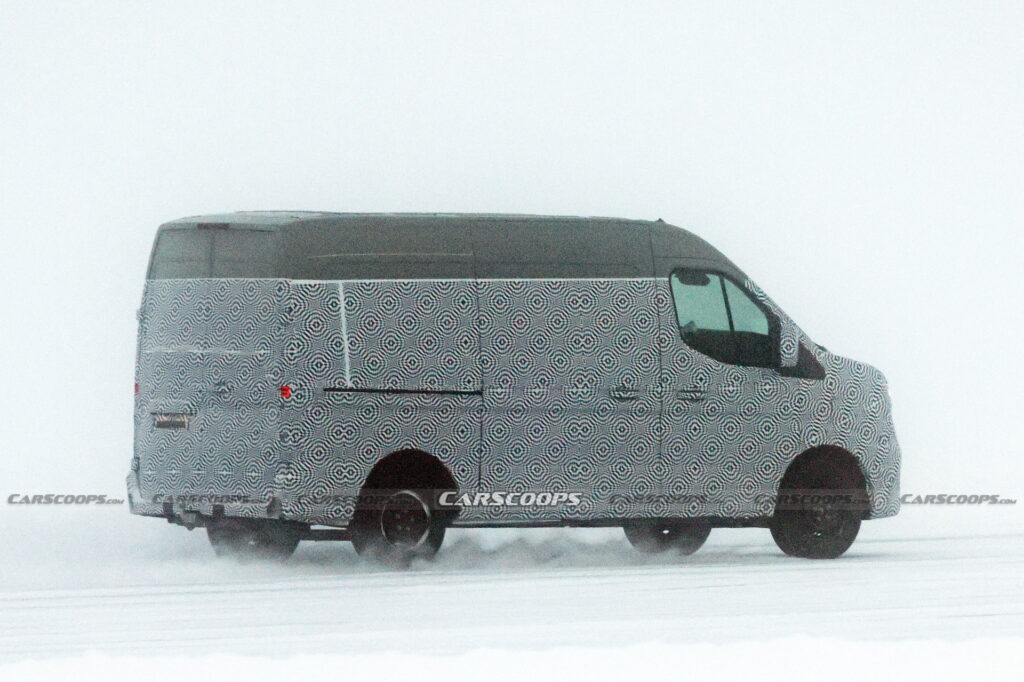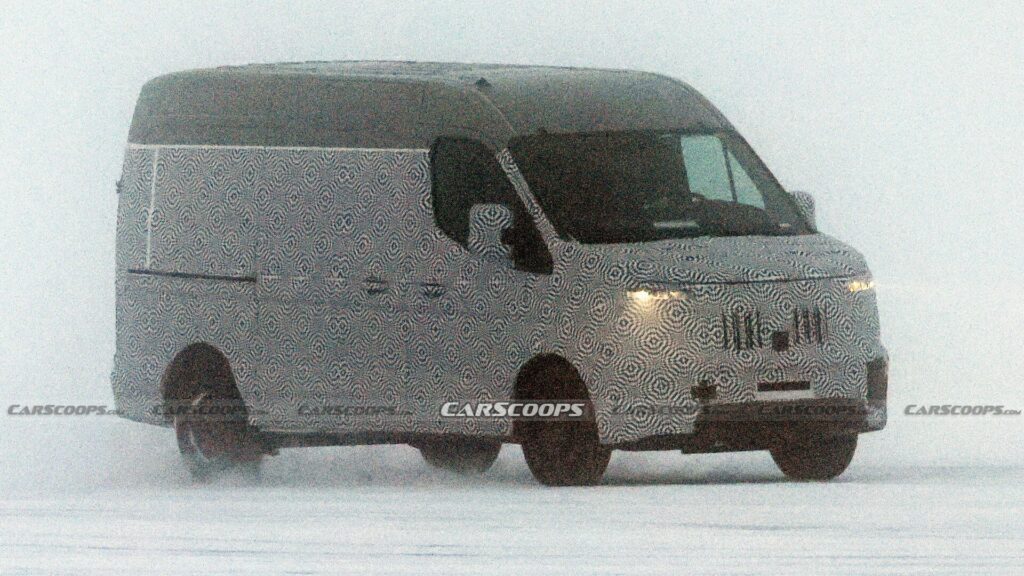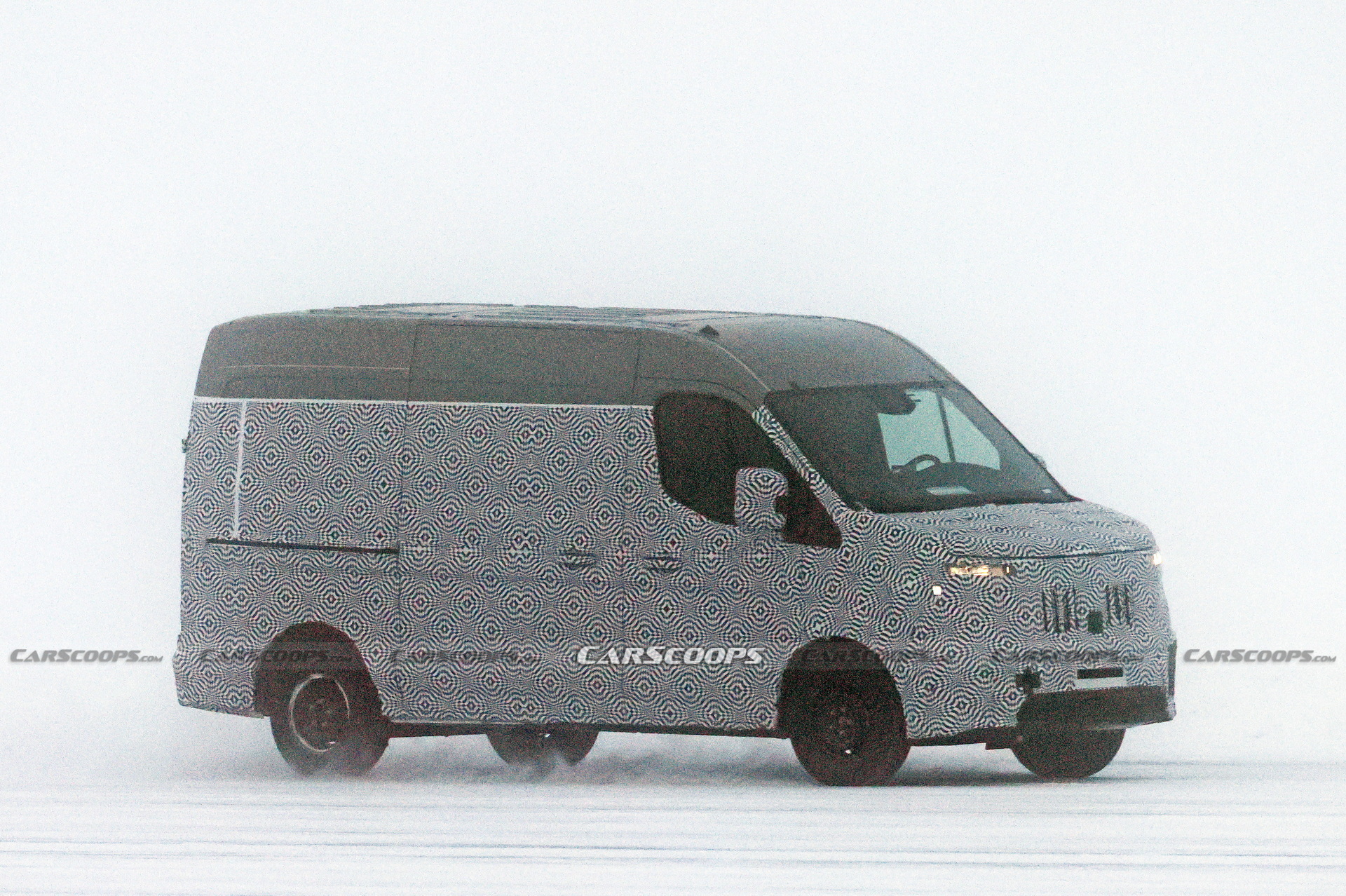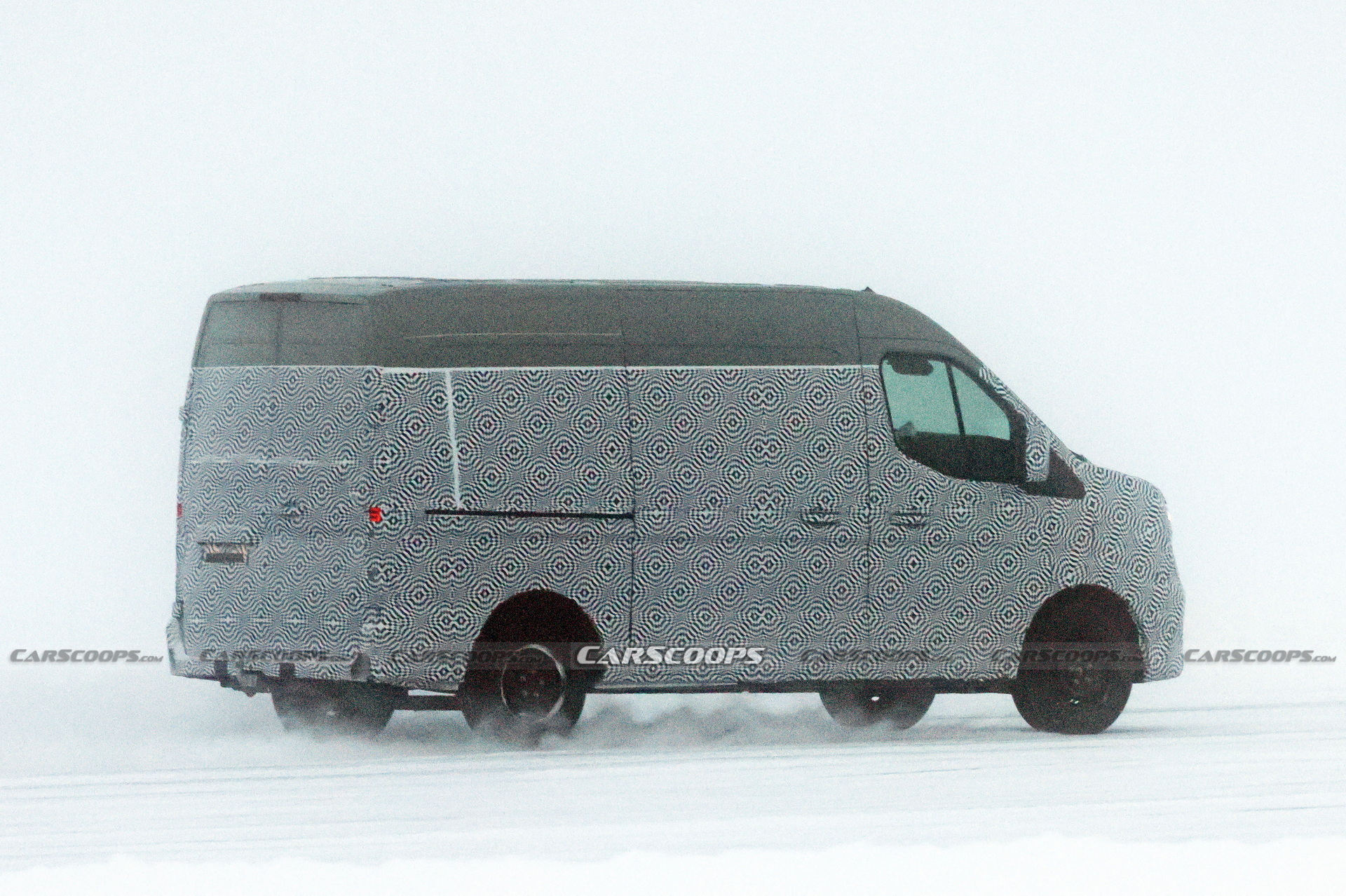Renault is working on the all-new fourth generation of the Master LCV, with a heavily camouflaged prototype making its spy debut during cold weather testing.
The prototype of the van was caught in bad weather conditions with poor visibility due to the fog and the snow. Furthermore, the camouflage wrap is covering every inch of the bodywork, with a few openings on the grille. The greenhouse looks similar to the current Master, but the front end has a boxier shape, the headlights appear to be slimmer, and the line for the sliding door on the profile is positioned lower. As with all large vans, the Master will come in different wheelbase and roof height flavors.
Read: Renault Master E-Tech Gains Larger Battery For 68% More Range

Naturally, the new Renault Master will be more focused on electrification, with the E-Tech variant taking a more important role in the lineup. Having said that, Renault will likely keep offering a diesel-powered option, at least until regulations make it obsolete. It is also expected that the new Master will get another zero-emission variant with a hydrogen fuel cell powertrain, following the recently revealed H2-Tech models by HYVIA.
Light commercial vehicles usually have pretty long product cycles, so it is no surprise that the current third-gen Renault Master has been around since 2010. The van received its latest and more extensive redesign in 2019, while the fully electric E-Tech variant was updated for 2022 with a significantly increased range. Still, the all-new Renault Master is not too far into the future with a rumored debut in 2024.
Rivals of the Renault Master include the Ford Transit, the Mercedes Sprinter, and the VW Crafter, plus the Stellantis family of LCVs comprising the Fiat Ducato, Citroen Jumper, Peugeot Boxer, and Opel Movano. The Renault Master is also expected to serve as the base for the next-gen Nissan Interstar / NV400.
We will keep you updated with news about Renault’s future LCV range. Hopefully, our spy photographers will catch the new Master in better weather conditions and with less camouflage next time.














